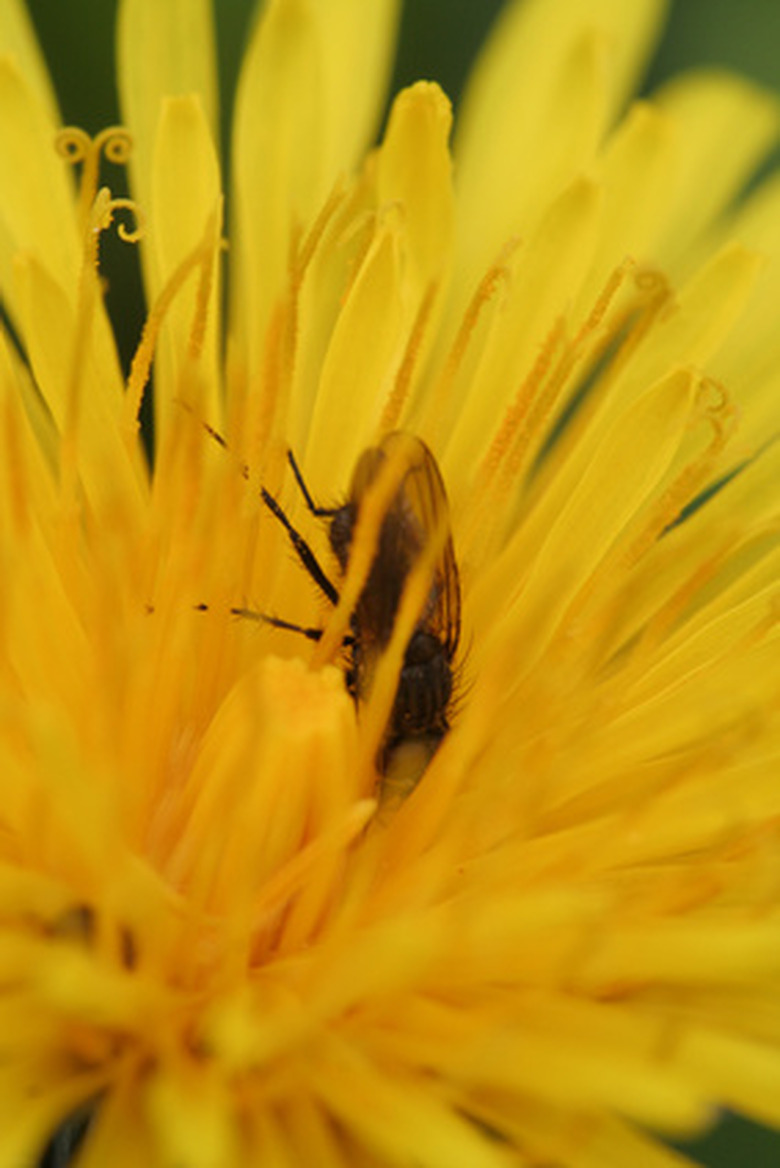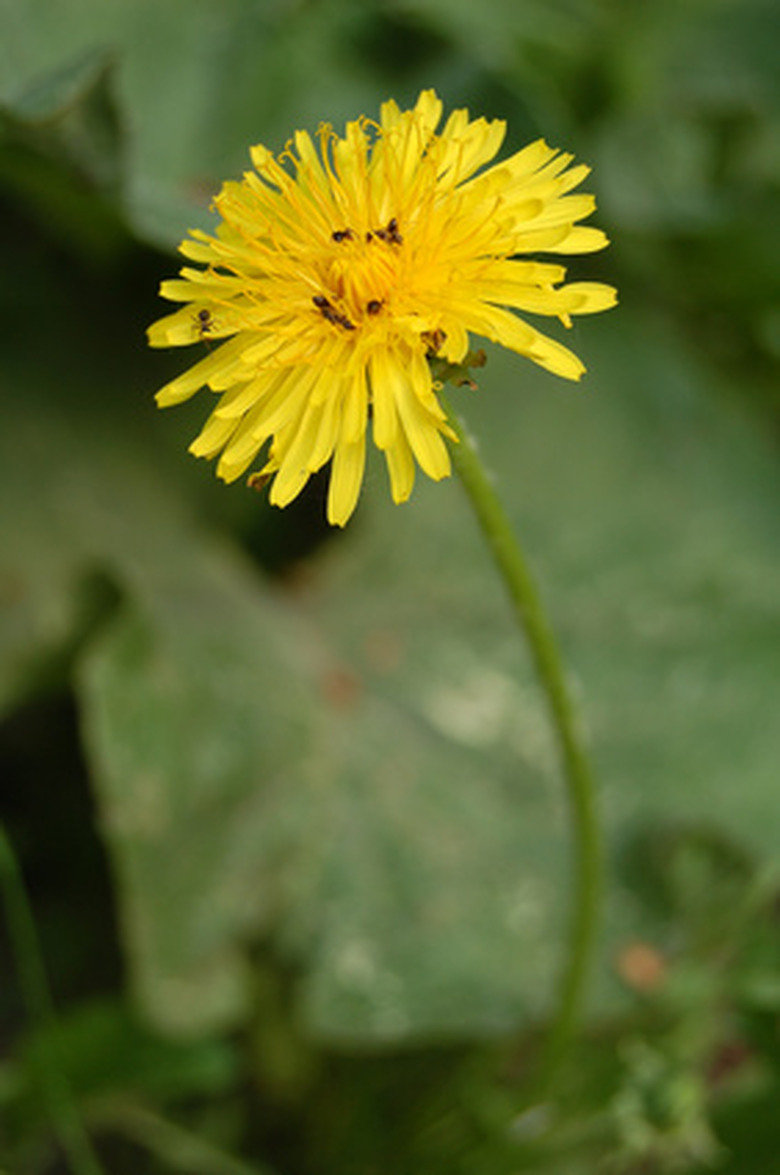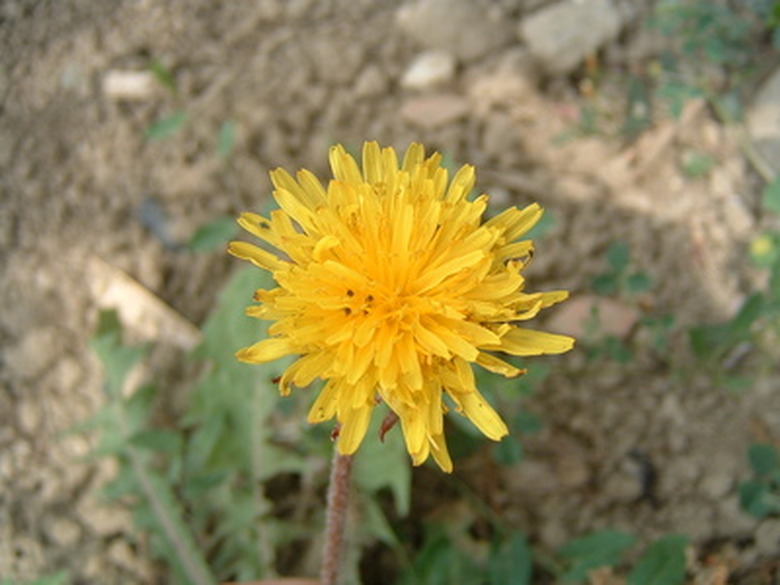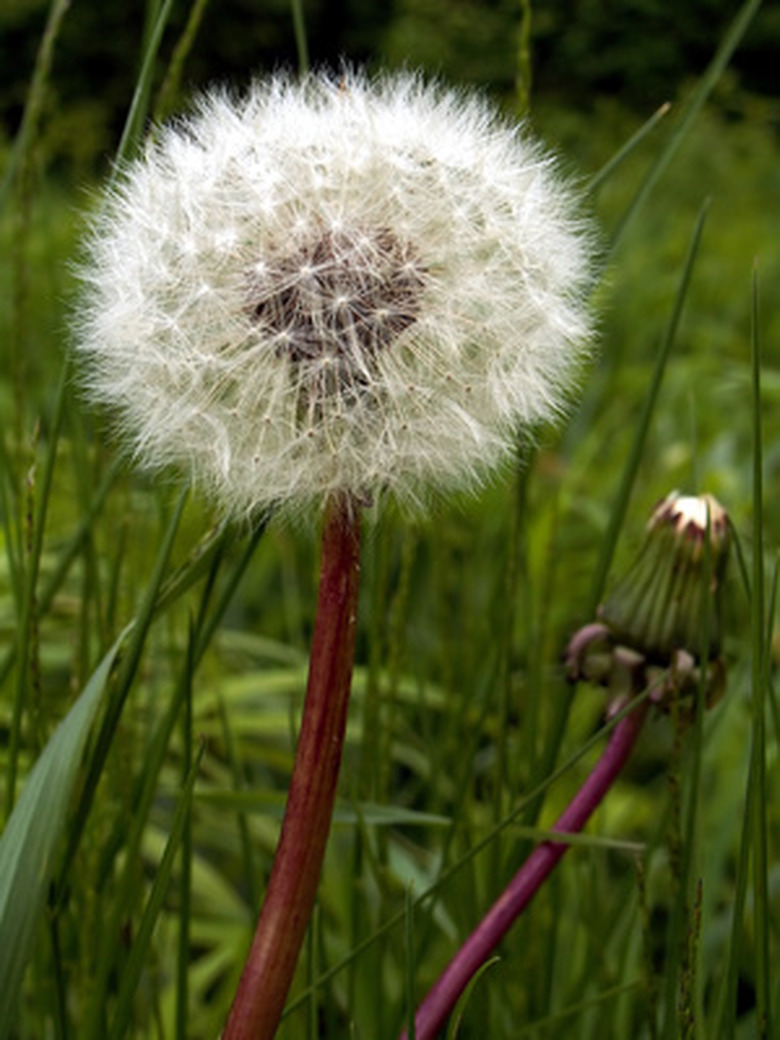Dandelion Root Vs. Dandelion Leaf
Dandelion (Taraxacum officinale) is native to North America and Europe. When these plants are taking over the lawn, it is hard to imagine their worth. But all of the parts of the dandelion have healthful benefits. The flower is important in honey production. The seed is a food source for small birds. And humans benefit from the leaf and the root.
Plant Description
The yellow ray-type flowers consist of many small petals with no visible center. The flower petals give way to a globe-shaped seed head. The flower stem is nearly hollow. The foliage is a typical weed-like clump. The leaves are medium-green and widely toothed. This plant has a deep tap root. It is dark on the outside, and white inside. The root contains a white milky substance.
- Dandelion (Taraxacum officinale) is native to North America and Europe.
- The foliage is a typical weed-like clump.
Benefits of Both Leaf and Root
The roots and leaves of the dandelion contain similar qualities, but at different levels. They contain vitamins A, B, C and D. They are a good source of minerals such as potassium, iron, calcium and zinc. They benefit the gallbladder, liver and kidney. Dandelion root and leaves have a cleansing and purifying effect on all major body systems. They promote bile secretion in the gall bladder. Bile is used by the liver to excrete toxins from the blood. Dandelion also acts as a diuretic, helping the kidneys filter toxins. Improved bile flow also helps the body metabolize fats. This will improve blood cholesterol levels. Dandelion contains luteolin, a cancer-preventing antioxidant.To benefit most from dandelion, use both the leaf and root.
- The roots and leaves of the dandelion contain similar qualities, but at different levels.
Dandelion Leaves
Dandelion leaves can be eaten in salads. Because the leaves are not processed, they retain more vitamins and minerals. Young leaves are more tender and less bitter. The leaves can also be cooked and eaten. The are also dried to make a tonic tea. It is better to use dandelion leaves for kidney support. They retain potassium, which is an important benefit when using the leaves as a diuretic.
- Dandelion leaves can be eaten in salads.
- They retain potassium, which is an important benefit when using the leaves as a diuretic.
Dandelion Root
Dandelion root can be used fresh or dried. It can be obtained in pill, capsule or as a tincture. The root contains higher levels of the constituents that support the liver and gallbladder. The roots are used dried, roasted and ground up as a coffee substitute. In England, a wine is made from dandelion root.
Cultivation
Dandelion is easily grown in all climates. Because the seed carries far and wide, it can become invasive. This can be avoided by removing the seed heads when they form. Grow dandelion in a bed just like vegetables. The leaves can be harvested at any time. The root should be harvested when it reaches 1/2 inch wide.
- Dandelion root can be used fresh or dried.
- The leaves can be harvested at any time.
Safety
Dandelion leaf and root could best be described as a tonic or a food supplement. Canada has classified it as a drug because it is a useful diuretic. Germany considers it an herbal medicine and has used it for a long time. Japan considers it a vegetable. It is not listed as harmful in any amount. While it is not a known allergen, any plant can cause allergies. A doctor should be consulted if there is known kidney or gallbladder disease. There may be cases where stimulating these organs would not be beneficial. Also, consult a doctor if you are taking other medications. Some herbs may lessen or increase the effect of prescription drugs.
- Dandelion leaf and root could best be described as a tonic or a food supplement.
- Canada has classified it as a drug because it is a useful diuretic.



